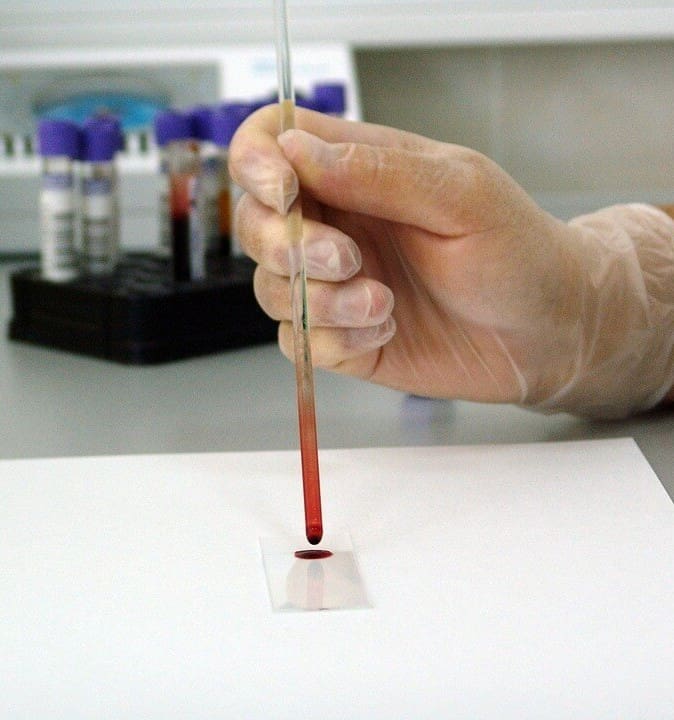Content :
◉ What is Hemopexin test?
Hemopexin (HPX) is a heme-binding plasma glycoprotein which after haptoglobin forms the second line of defence against hemoglobin-mediated oxidative damage during intravascular hemolysis.
Also known as beta-1B-glycoprotein, hemopexin is encoded by the HPX gene in humans.
Its primary function is to bind and transport free heme molecules to prevent their toxic effects and facilitate their recycling.
This test is commonly used to diagnose and monitor disorders like hemolytic anemia and liver disease, often in conjunction with other tests.

◉ What is the function of Hemopexin ?
Hemopexin is a protein that binds to heme which is a part of hemoglobin, a molecule that carries oxygen in the blood.
When red blood cells are damaged or destroyed, hemoglobin is released into the blood and broken down into heme and globin. Heme can be harmful to the body if it accumulates in excess, causing oxidative stress and inflammation. Hemopexin helps to prevent this by scavenging heme and transporting it to the liver for degradation.
Hemopexin also prevents the loss of iron, which is an essential element for the production of new red blood cells.
◉ What is the HPX test used for?
The purpose of this test is to measure the level of hemopexin in the blood, which can provide information particularly related to heme metabolism and iron overload, such as sickle cell anemia, thalassemia and autoimmune hemolysis.
◉ How can I prepare for the test?
The hemopexin blood test does not require any special preparation.
◉ Normal levels of Hemopexin
The normal range of the hemopexin test may vary depending on the laboratory and the method used, but it is usually:
- Male: 0.5 - 1.1 g/L.
- Female: 0.6 - 1.3 g/L.
This means that the level of hemopexin in the blood should be within this range for a healthy person.
◉ High Hemopexin
1. Causes
Possible causes of high values of hemopexin test are:
- Liver disease: The liver is the main organ that produces and clears hemopexin from the blood. Liver disease may impair the production or clearance of hemopexin, resulting in abnormal levels. High hemopexin levels may indicate liver inflammation or damage, while low hemopexin levels may indicate liver failure or cirrhosis.
- Infection or inflammation: Hemopexin is an acute-phase protein, which means that its level may increase in response to infection or inflammation in the body.
2. Symptoms
Symptoms of infection or inflammation may include fever, chills, pain, redness, and swelling.
◉ Low Hemopexin
1. Causes
Possible causes of low values of hemopexin test are:
- Hemolytic anemia: This is a condition where red blood cells are destroyed faster than they are produced, leading to low hemoglobin and high free heme levels in the blood. Hemopexin binds to free heme and prevents its toxic effects, so hemopexin levels may increase as a compensatory mechanism.
- Iron deficiency anemia: This is a condition where the body does not have enough iron to produce hemoglobin, the protein that carries oxygen in the red blood cells. Iron deficiency anemia can cause low hemoglobin and low hemopexin levels.
- Liver failure or cirrhosis: Liver failure or cirrhosis can impair the production or clearance of hemopexin, resulting in low levels.
2. Symptoms
- Symptoms of hemolytic anemia may include fatigue, weakness, jaundice, dark urine, and enlarged spleen.
- Symptoms of iron deficiency anemia may include fatigue, weakness, pale skin, shortness of breath, and increased susceptibility to infections.
- Symptoms of liver failure or cirrhosis may include nausea, vomiting, abdominal pain, jaundice, itching, and swelling.
◉ Relation to haptoglobin
Both haptoglobin and hemopexin are acute-phase proteins, with their synthesis induced during infection and inflammatory states and both serve to prevent heme toxicity.
The simultaneous measurement of hemopexin and haptoglobin is valuable in assessing the severity of hemolysis:
- In cases of mild hemolysis, haptoglobin levels decrease while hemopexin remains normal.
- In contrast, in cases of severe or chronic hemolysis, both haptoglobin and hemopexin levels are reduced.
- Or in case of congenital haptoglobin deficiency.
◉ Additional tests
Some other related analytical tests to the hemopexin test are:
- Complete blood count (CBC): Provides information about the number and types of blood cells, including red blood cells that may be affected in hemolysis.
- Haptoglobin test: Measures the level of haptoglobin in the blood, another protein involved in binding and clearing free hemoglobin.
- Bilirubin Test: Assesses the levels of bilirubin, a product of heme breakdown, which is cleared by the liver.
- Liver Function Tests (LFTs): These tests include markers like AST, ALT, and ALP, which can indicate liver function and health.
- Hemoglobin and Hematocrit Levels: Measure the amount of hemoglobin and the proportion of blood occupied by red blood cells.
◉ Conclusion
The hemopexin test is a valuable diagnostic tool used to assess the level of hemopexin protein in the blood. Hemopexin plays an essential role in binding and removing excess free heme.
It is essential to consult with a medical professional, such as a hematologist or relevant specialist, to accurately interpret the hemopexin test results in conjunction with other clinical data. They will consider the patient's specific health circumstances, medical history, and conduct further investigations to provide an appropriate treatment if necessary.